Arroyo Hondo Fire Followers
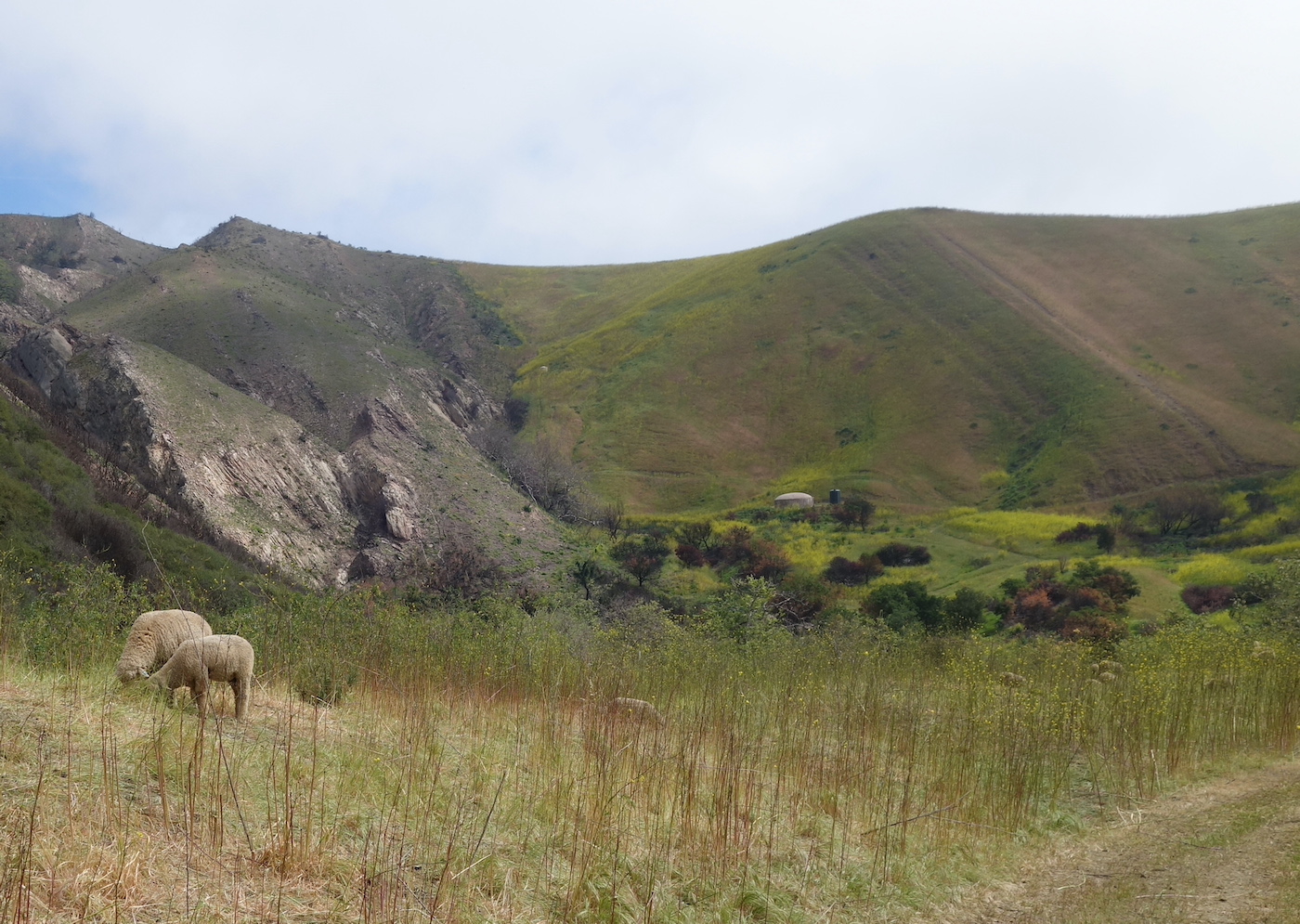
As the Mule smoothly powers up the West Ridge Trail of Arroyo Hondo Preserve, we pass a flock of sheep grazing on yellow-flowered mustard. The wooly beasts and their owners await an upcoming shearing day in the paddock at the base of the hill. In the meantime, the flock munches on the grasses and mustard on the slope above.
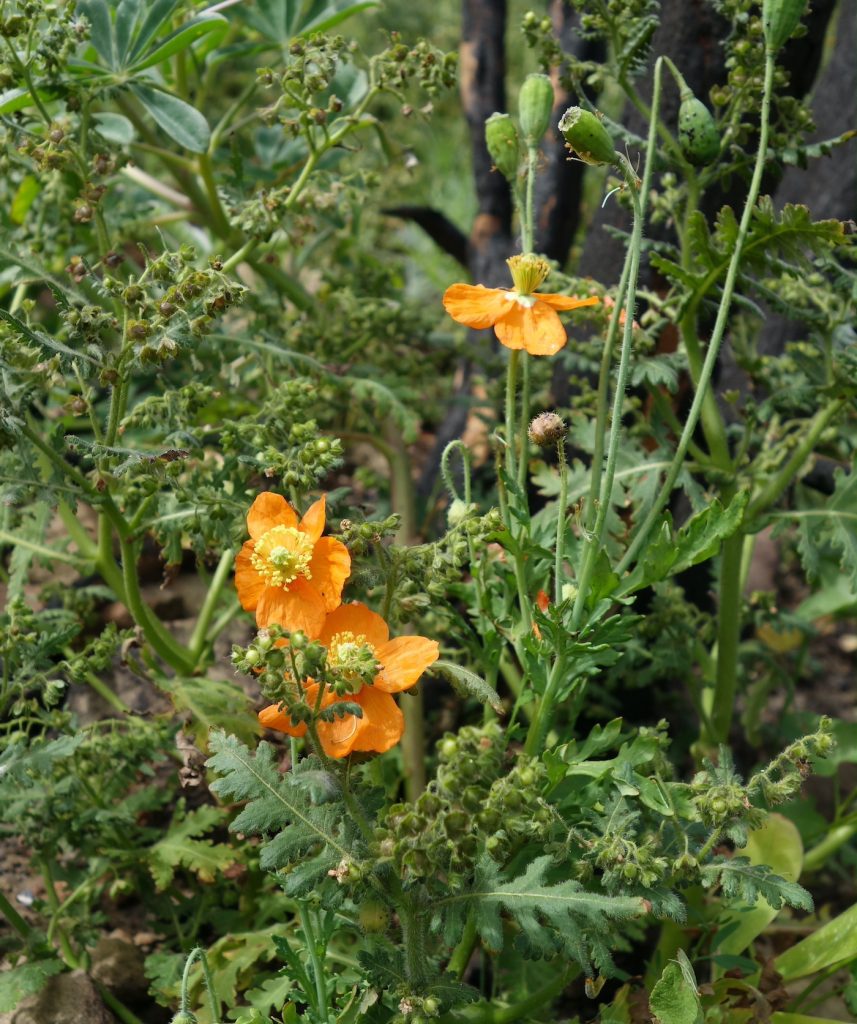
My friend Ann and I are taking a tour of Arroyo Hondo’s stages of recovery from the Alisal Fire, and John Warner, Arroyo Hondo Preserve Manager, is our driver and guide. John has been busy in the months since the fire burned, removing silt from the base of trees, weeding, rebuilding roads and trails, conducting/supervising studies concerning regrowth, and countless other chores. All are necessary to the recovery and reopening of Arroyo Hondo Preserve to the public with the added mission of education about the role and effect of fire in the landscape.
When I toured the damage to the canyon in early November 2021 (thanks to an invitation from the Land Trust of Santa Barbara County, which established and owns the preserve), the bleak charred landscape was shocking: scorched trees, hillsides denuded of chaparral, already the rivulets of erosion from the previous week’s rain and silt in the creek adding to the concern for a major debris flow. Yet even then, here and there, a few blades of new life were sprouting. At that time, Warner had explained that annual grazing by sheep and a neighbor’s cattle to the west had kept the mustard at bay and grazing by sheep on the slopes to the east had helped as well. Also, the west side had burned in 2004, so the chapparal wasn’t as overgrown. On the east, however, it hadn’t burned since 1955, and the Alisal Fire had raged down the hillside to threaten the venerable Ortega Adobe.
Today, the mustard is standing too high. Rolling hills of yellow-flowered mustard may appear beautiful, but the plant is an invasive species that chokes out a host of native plants. As we travel upward through these colorful fields, John explains that black mustard (Brassica nigra) is allelopathic. It chemically inhibits the germination of seeds of other species, and so it thrives and becomes dominant and exclusive. Its success is evident in the fact that it exists in nearly every corner of the globe and eradication is difficult.
Fire Followers on the Ridge
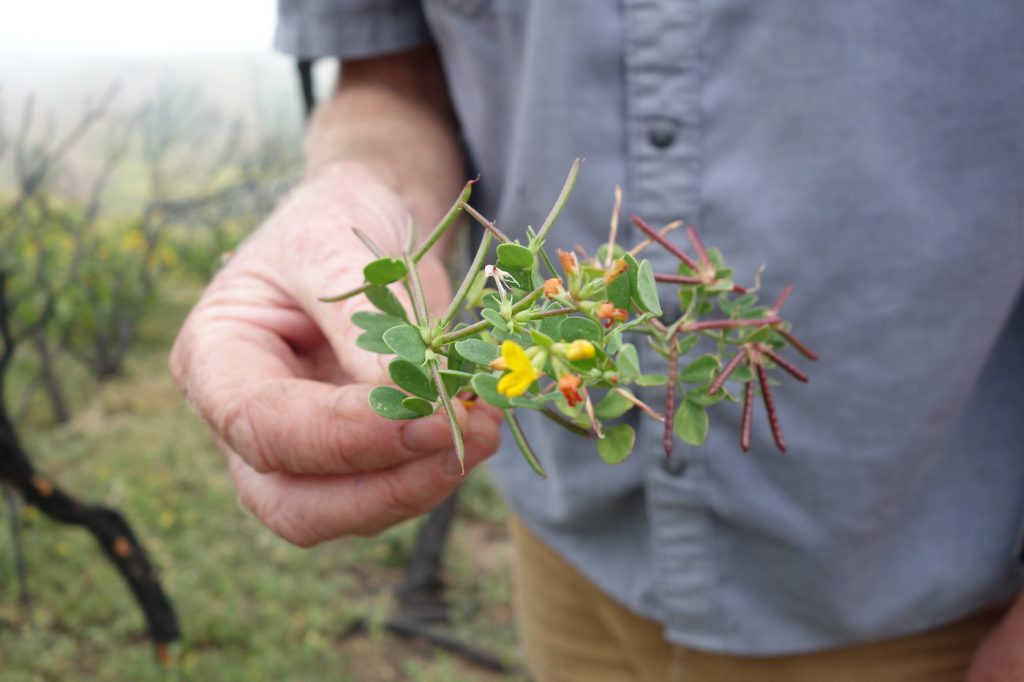
As we near the top of the ridge, John parks the Mule and we proceed on foot. A short distance up the road we encounter the magic of the fire followers. What had been a desolate moonscape of charred skeletons in October, has become a lush garden of floral splendor. Fire followers are plants that germinate in response to fire, charred soil, and smoke. For many, the heat cracks seeds that have lain dormant for years. For others, the chemicals in charred soil stimulate germination. Still others find that the destruction of dense chaparral allows sunlight to coax them to blossom.
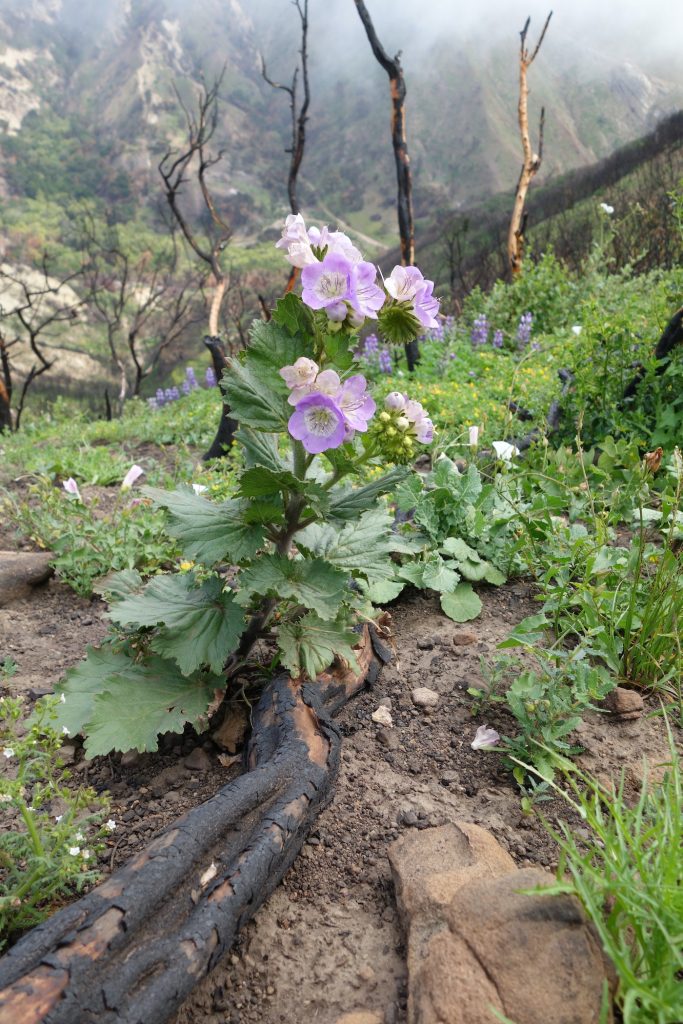
On ascending the ridge we find, intermingling in festive swatches, the tiny yellow blooms and long seed pods of a legume called “coastal lotus.” Clusters of whispering bells have risen from the denuded earth. Fire poppies, Indian pinks, mariposa lilies, and Phacelia grandiflora grow merrily among the skeletal toyon and ceanothus. Rappaccini’s hand is seen in the death camas and wild cucumber. Bird song accompanies this floral party. Warner says he’s noticed an increase in these voices as the rebirth of the canyon progresses.
The flowers are not alone in their renascence, however. The toyon and greenbark ceanothus, which appeared completely destroyed in October, have begun their own resurrection. Both are crown resprouters, which means they are able to regenerate their shoot system from the root crown. Many of the blackened scrags now wear a skirt of fresh green vegetation.
While John returns to the Mule, Ann and I walk down the trail and into the canyon, marveling at the flowers and snapping countless photos. In one burned out draw, the entire slope is blanketed with blue lupine. In other areas, white morning glory dots the landscape. In years past, up on the Alisos Trail out of Paradise Canyon, I’ve seen the white flowers twining through the blackened chapparal in such great swaths that the verges of the trail appeared draped in matrimonial white.
John is waiting for us when we return to the canyon floor, and we are off again in the Mule heading for the Outlaw Trail. We learned that the canyon lost 95% of its trees and 90% of those were bay trees. Luckily, they too are crown resprouters, and we see several trees that are well on their way. Also, luckily, the famous “bathtub tree” is still intact. It is presumed that at one time it had regrown after an ancient fire. Perhaps there will be multiple “bathtub” trees in the distant future.
Fire Projects
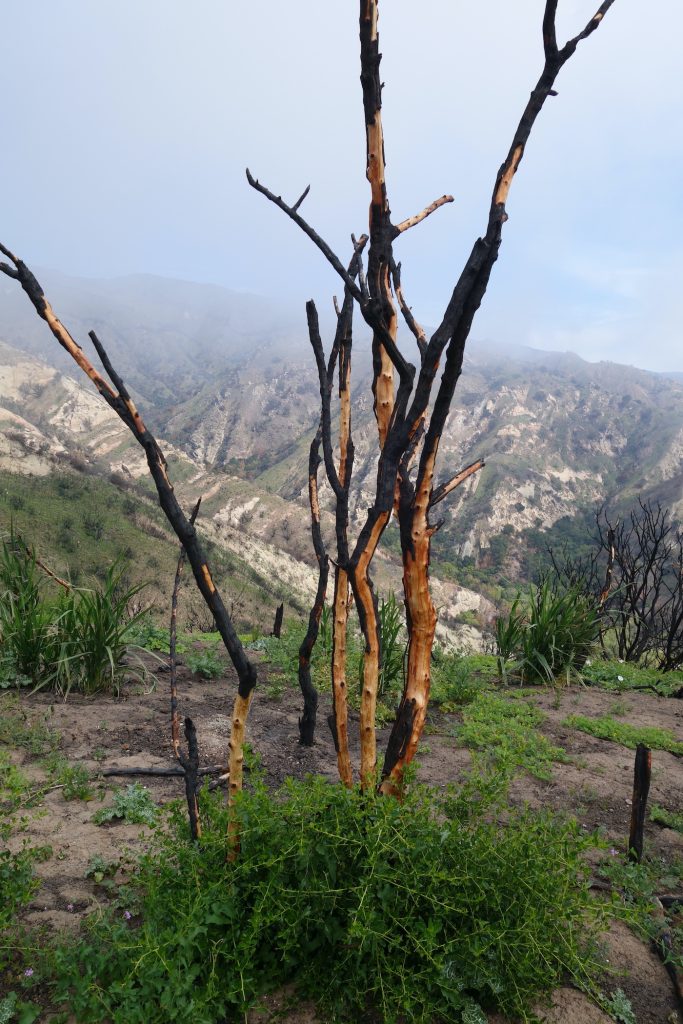
As we wend our way under the riparian corridor, where the live oak and sycamore trees have fared better than the bay, Warner explains that there are now three camera projects in the canyon. The father-son team of Stuart and Callan have installed new video cameras and continue their monitoring of Arroyo Hondo’s wildlife. These are viewable on the Land Trust for Santa Barbara County’s website. A still camera project by John Stuelpnagel is motion activated by animals and shows both them and the background changing over time. Inadvertently, we become two of the animals caught on camera. The third project is by Ethan Turpin, who is taking time lapse photos of plant development and will be creating an immersive project of nature’s response to fire. Sally Isaacson, Arroyo Hondo Education and Volunteer Coordinator, is also keeping a photographic record of the regeneration over time.
Isaacson is working to create an educational tour and program aimed at elementary school children. Its focus will be to educate children (and adults) about the role of fire in the environment and how that is playing out at Arroyo Hondo Preserve.
In another effort to study the effects of fire, five sets of two contiguous plots have been laid out in various geologic areas of the canyon. One of each set is weeded; the other is not. They hope to learn how post fire regeneration of native plants is affected by human intervention of weeding versus not weeding. They also hope to learn how soil and orientation affects regeneration. In addition, every two months, a meter-by-meter grid count of plants will be logged. This is a three-year project.
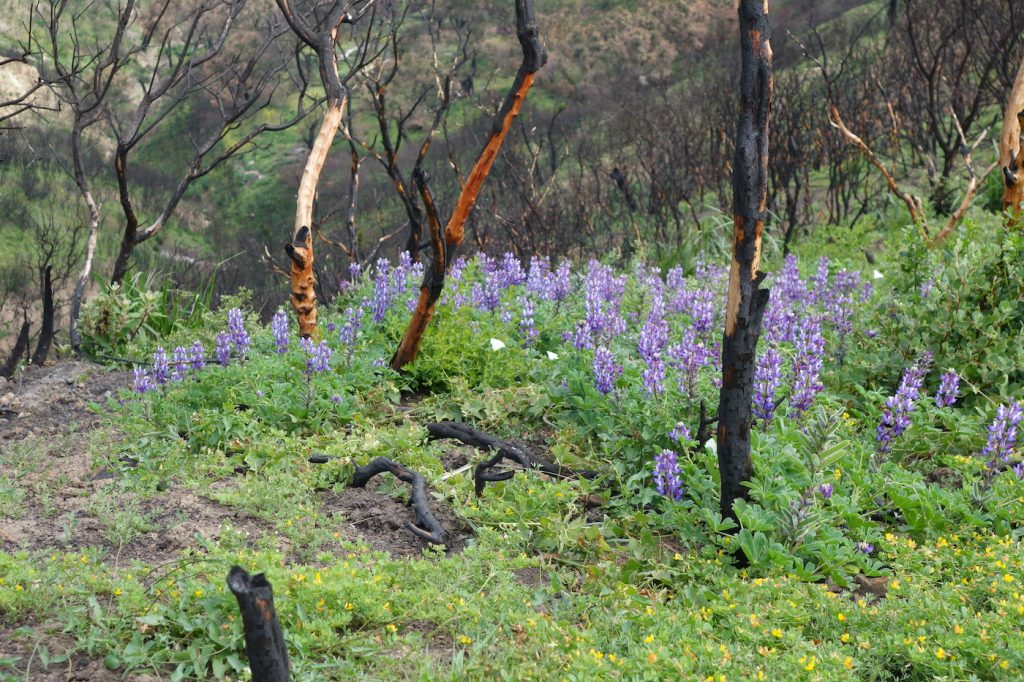
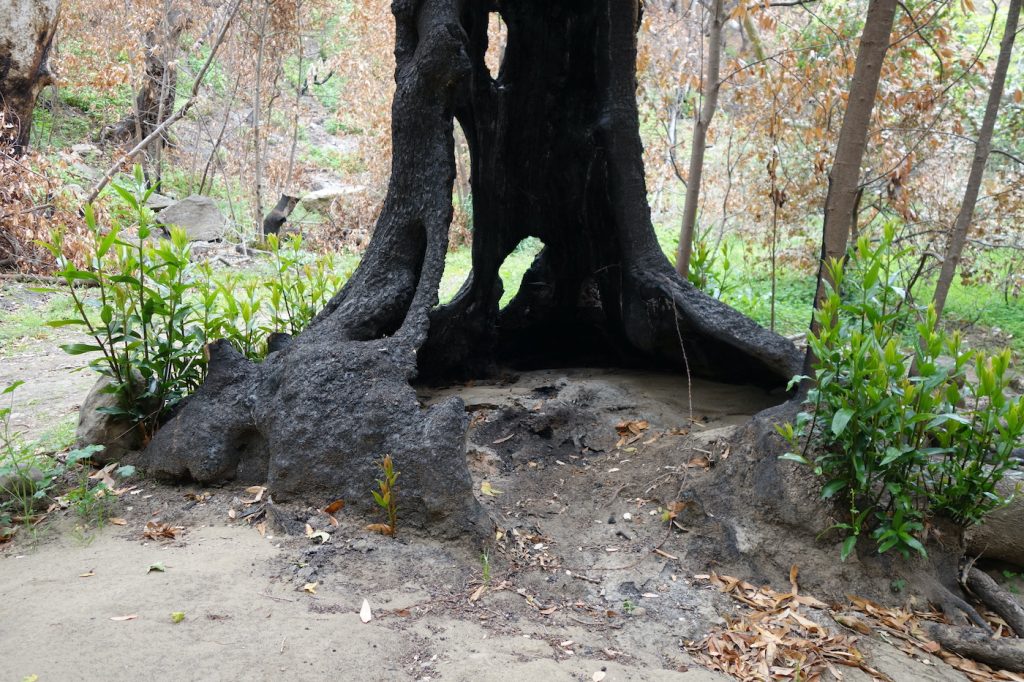
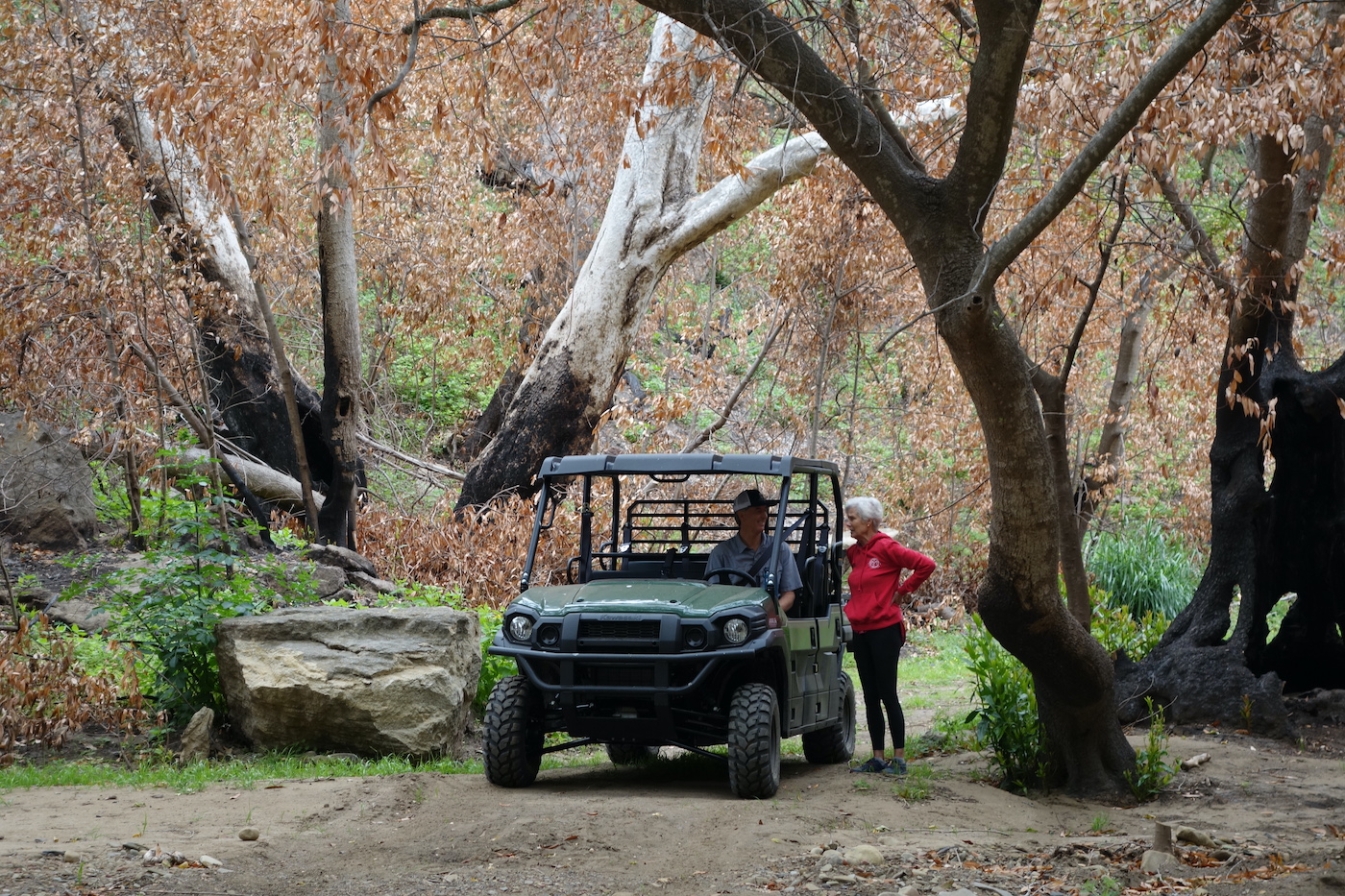
Meanwhile, the Preserve’s mission has always included restoration of the natural environment. Arroyo Hondo volunteers continue to plant native plants to enhance the habitat. These receive three to five inches of mulch and are irrigated for the first year, and then in summer for one more year. All seeds are collected on the Preserve, so the new plants are genetically local, an important aspect of true restoration. John tells us that that the native California poppy is bicolored, yellow and orange, but that introduced poppies and cross pollination has made such poppies disappear from most locales. In one case, bringing in genetic material from the same species of plant from another location has caused an entire species of insect to become extinct.
When we reach the junction of the lower and upper Outlaw Trail, I am happy to see that the undergrowth of the hill I photographed in November 2021 is ablaze with blue lupine, though some areas are still bare and bear the rivulets of erosion I saw then. So, too, the view toward the ocean reveals significant regrowth, helped along by John and a crew that weeded and desilted the quebrada between the upper and middle meadows.
With our tour at an end, we return to the Ortega Adobe, which was mercifully saved from the fire. There is much that remains to be done at Arroyo Hondo Preserve, but the Land Trust for Santa Barbara County hopes to open the Preserve to school groups and the public this May. As usual, a visit is free but by reservation only. Donations, however, for the incredible work being done by staff and volunteers are always appreciated.





